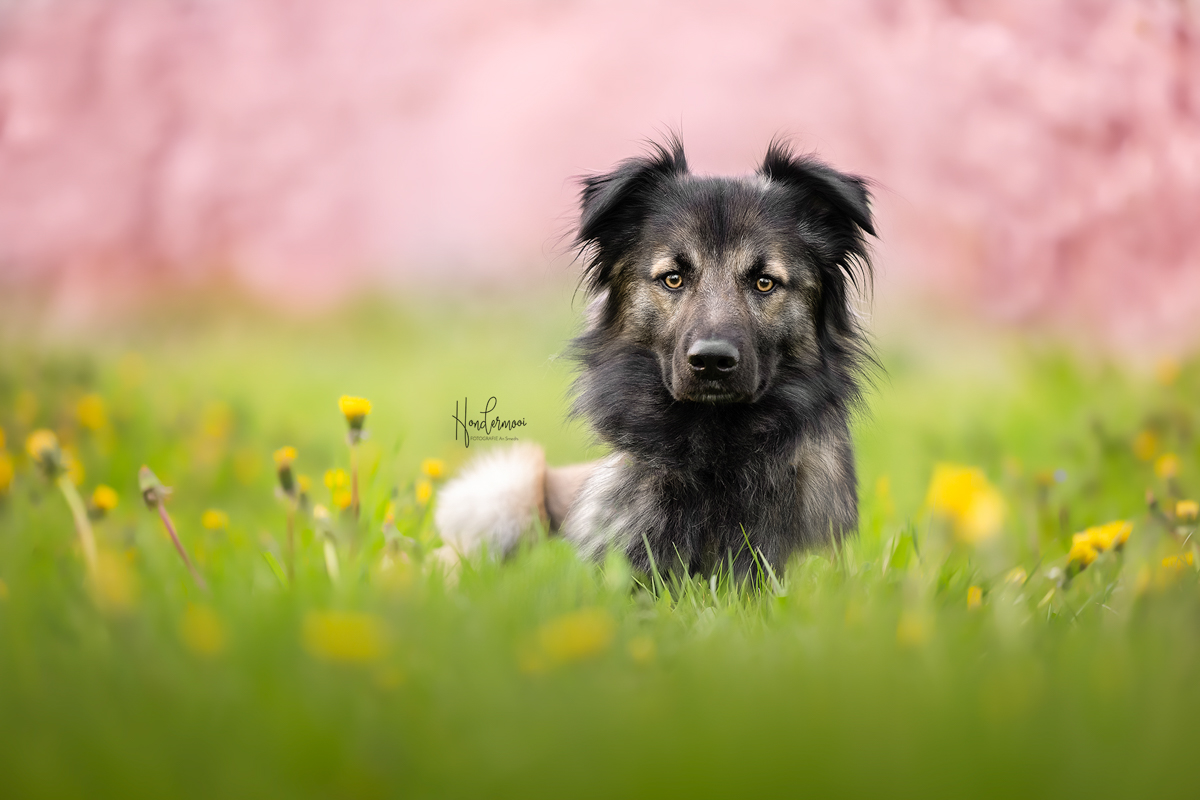I’m often asked during a workshop how to achieve a soft background in my photos. People assume that this is done in post-processing, but nothing could be further from the truth!
If you take into account the following 4 tips, I guarantee you a perfectly blurred background straight out of your camera!
1. Use a wide aperture
Tele lenses such as the 135mm f/1.8 or the 70-200mm f/2.8 allow more light in, resulting in a shallower depth of field in your photo. Depth of field refers to the area that is sharp in the photo.
Landscape photographers often choose to have the entire photo in focus. However, as a dog photographer, you prefer to have the dog sharp while the background is not, directing all attention to your subject.
The lower the f-stop or aperture value (e.g., f/1.8 or f/2.8), the quicker you’ll achieve a blurred background. Unfortunately, this lenses can be quite expensive, but a low aperture is an absolute must to isolate your subject from the background.
However, it’s not just the lens that gives you a blurred background! With a 50mm f/1.8 lens, you’ll get a less blurred background than with a 70-200mm lens. This is because the focal length also plays a role in achieving a soft background.
I photographed the beautiful border collie Skye with the 135mm lens at f/1.8 aperture. This results in a nice soft effect in both the foreground and background.
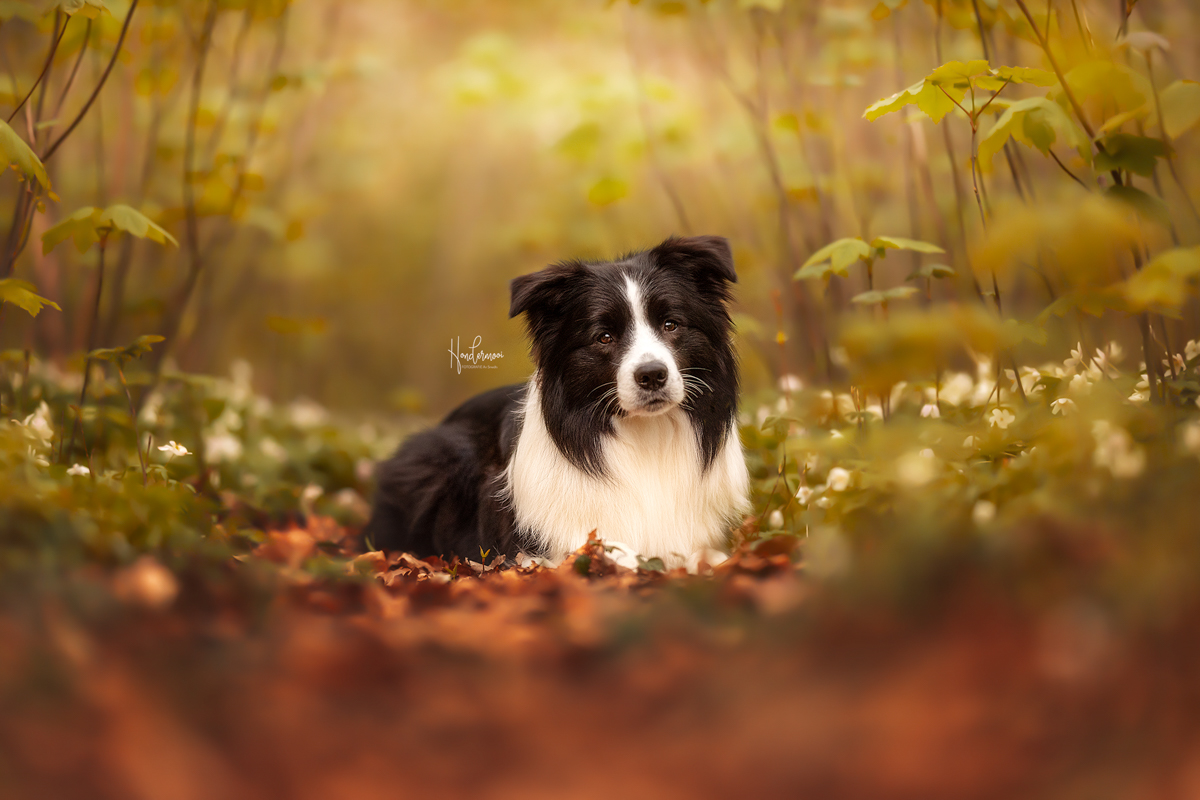
2. Focal lenght
Lenses with a longer focal length will create a softer background than wide-angle lenses, even if you’re using the same aperture!
So, a 135mm or 70-200mm lens will much more easily create a blurred background than a 35mm or 50mm lens. However, if you’re using a zoom lens like the 70-200mm, it’s important to always use it fully zoomed outdoors!
I photographed the chihuahua with the 70-200mm lens at 2.8 aperture, zoomed in at 200mm.
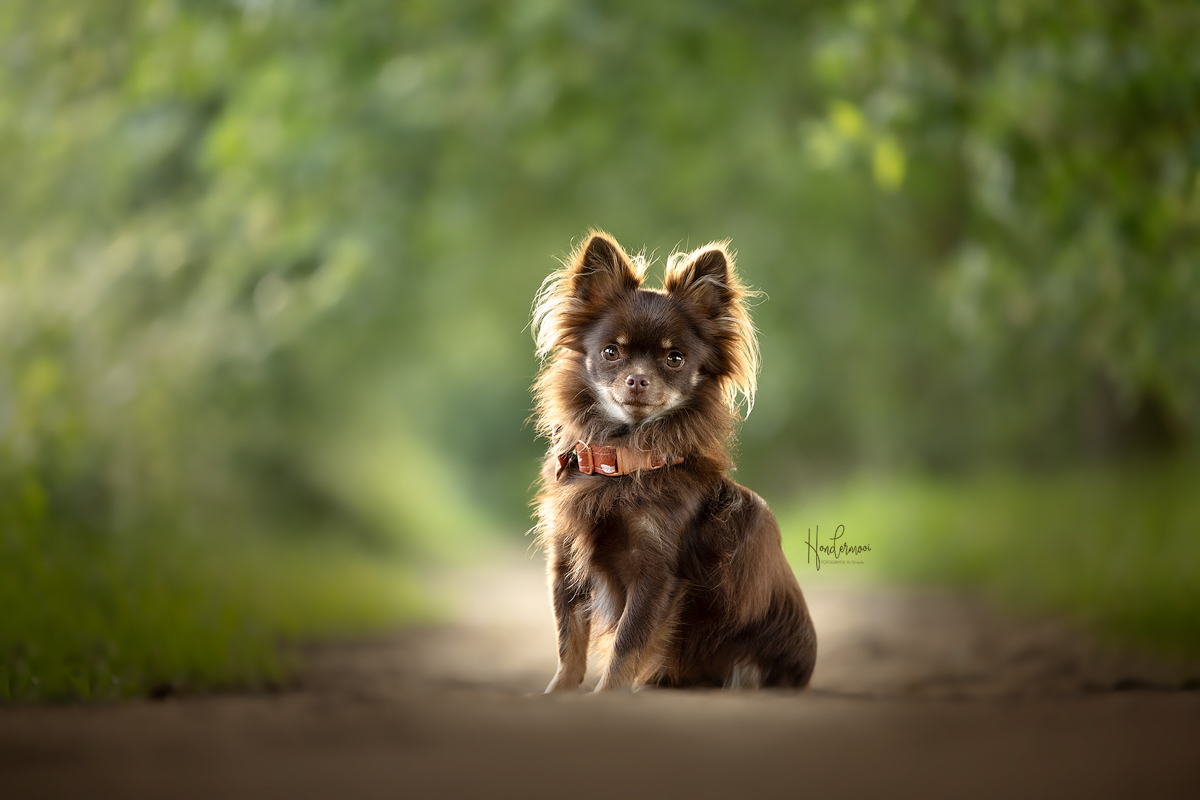
I photographed this border collie with the 15-35mm lens. The aperture used was also 2.8, yet the trees in the background are still relatively sharp because I used a wide-angle lens here.
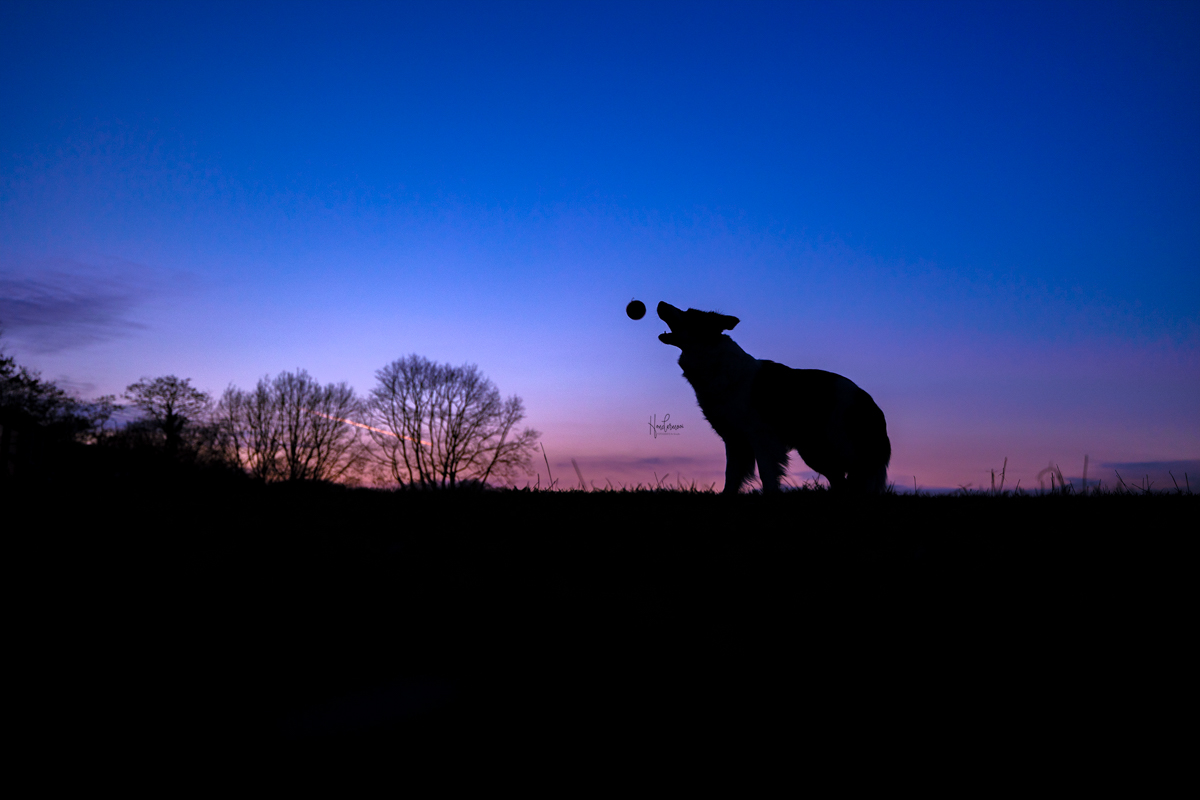
3. Pay attention to your location choice
It’s also important to consider where you’ll position your subject. Even if you consider the above 2 points, if you place the dog directly against a wall or in front of a bush, it will still appear quite sharp in the image.
The podenco below was photographed with the 70-200mm at 2.8, yet the background remains fairly sharp in the image. However, by choosing a slightly angled perspective, you can still achieve the necessary depth in your photo. Rules are meant to be broken sometimes; not every photo needs a blurred background! Follow your own ideas in creating what you have in mind!
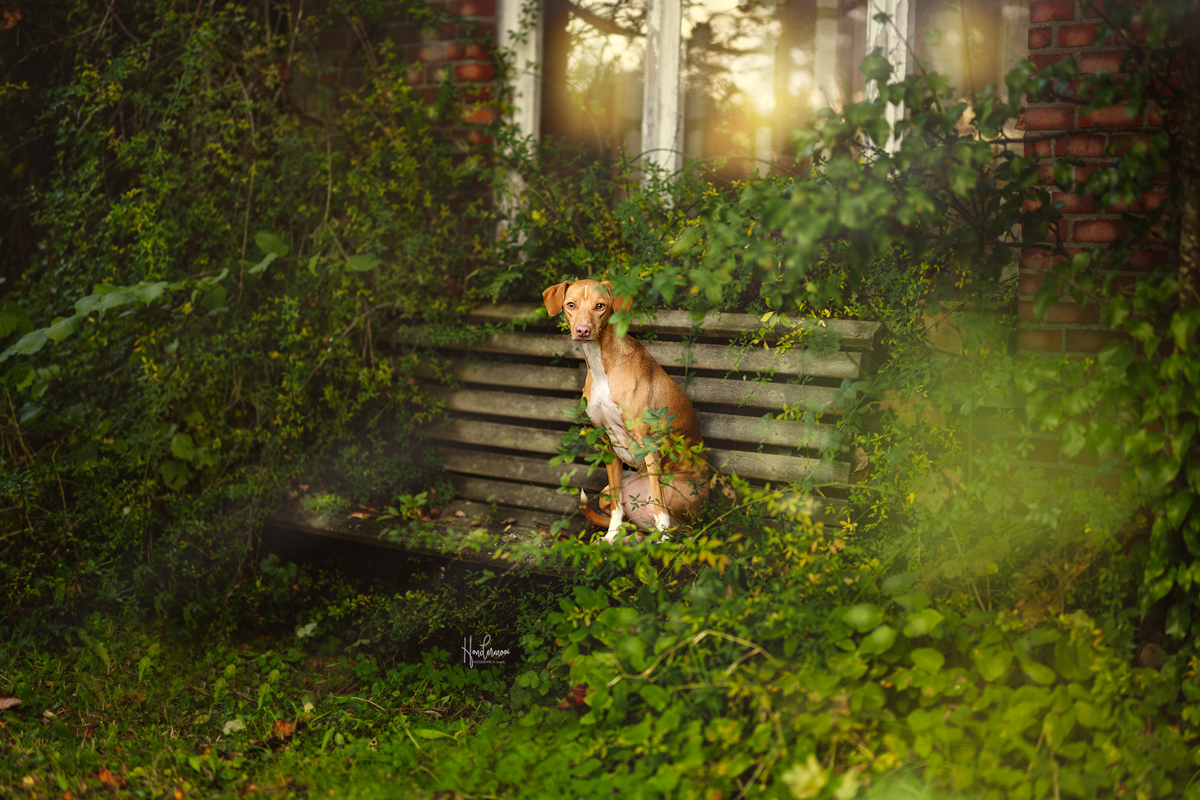
I placed this Belgian Malinois in a wheat field, using the 135mm lens at f/1.8. Due to the depth of the field, it’s very easy to achieve a soft effect in the background here!
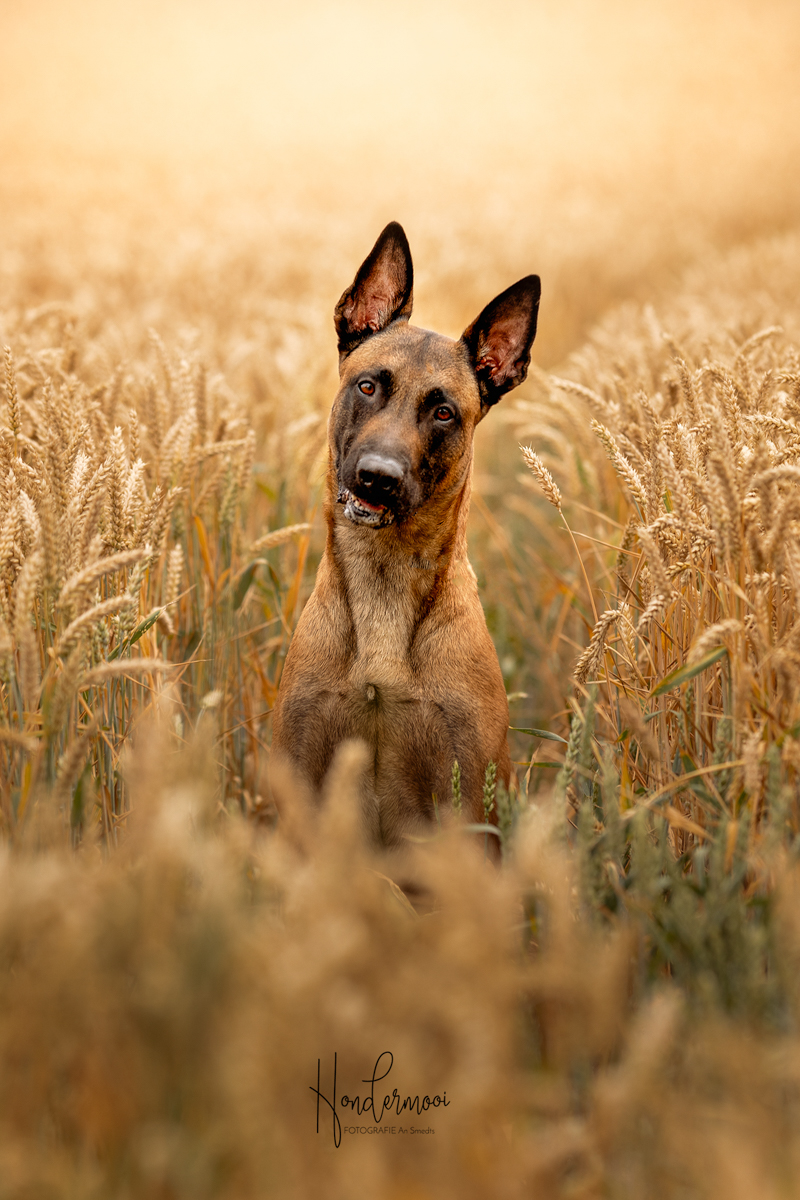
4. Distance to your subject
Lastly, the distance to your subject also contributes to the softness of your background. The photos below were taken in exactly the same location. The dachshunds are very small, allowing me to photograph them from a closer distance, which will make the background blur more easily.
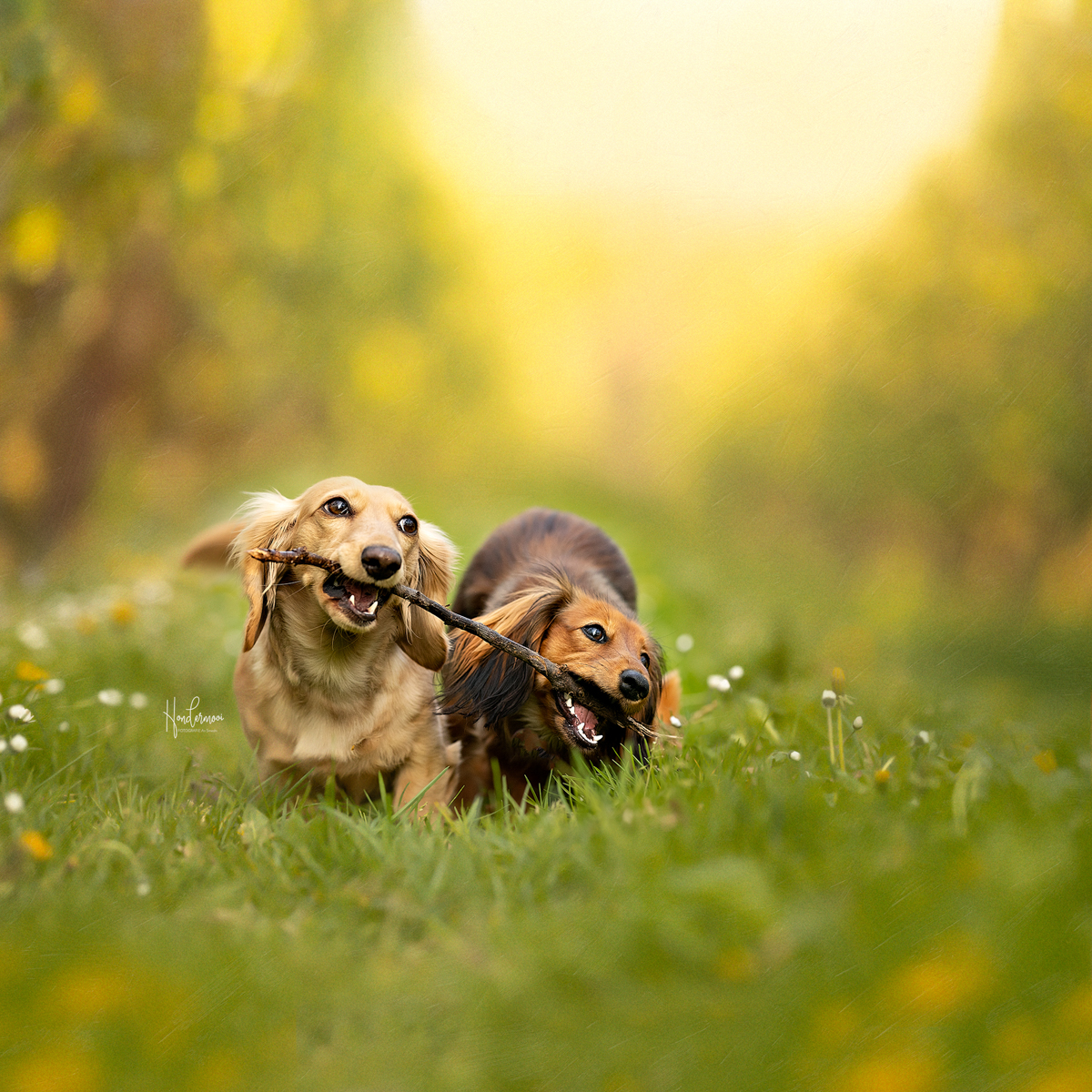
However, if you want to capture an entire family in the frame, you need to take more distance from your subject, and this will also impact your background. As you can see, everything here is much sharper in the photo!
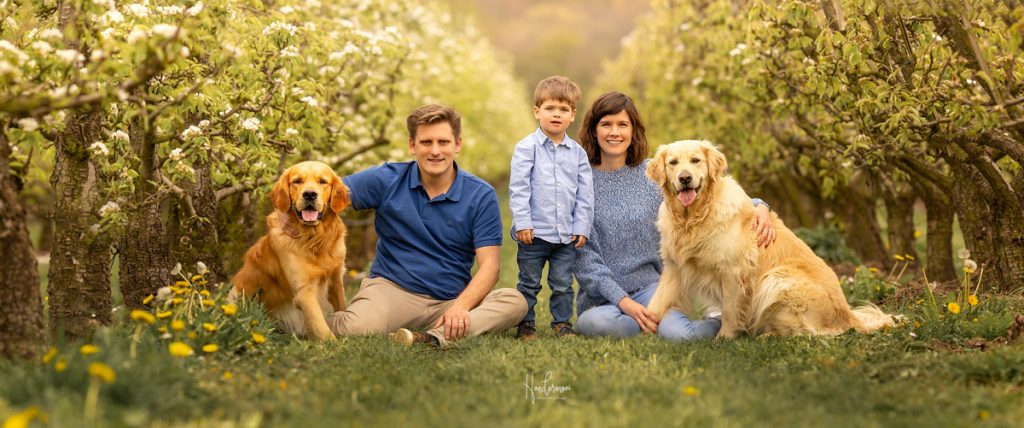
If you successfully combine the above 4 tips, you will effortlessly achieve a beautiful blurred background straight out of your camera, making your subject stand out immediately!

